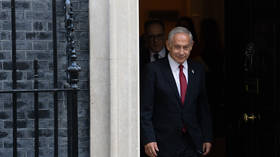It must be raining cents in Washington

The penny has dropped and U.S. leaders have followed Germany and several other European countries in buying government stakes in banks to boost public confidence and prevent a rush by depositors to stuff their savings under the mattress.
The money, $US 250 billion of it, comes as part of the $US 700 billion U.S. rescue package agreed at the beginning of October.
Nationalising the banks is the new big idea among European and U.S. politicians, though not to us at RT. I suggested buying stakes in banks a month ago – but not in the way the western governments are doing it.
British Prime Minister Gordon Brown has suggested the scheme might help peg house prices at 2007 levels. That would be a gross misuse of a scheme that should recapitalise the banks and encourage them to lend to business, to employers. Any attempt to tell the banks to support asset values at specific levels will distort the entire scheme and lead to its collapse.
Earlier efforts to get banks to lend by giving them access to cheaper government funds failed because regulators, bankers and politicians misunderstood the nature of the crisis.
It is not a liquidity or credit crunch when banks refuse to lend money to fellow banks, even for 24 hours, for fear they might not be paid back. That is a fear-of-default crisis.
Where bankers fear to tread, governments can lead, persuading banks to lend. It’s easy to say, but hard to get it right. This financial crisis stems from the inability of banks, ratings agencies and regulators to measure the probability of default. Risky loans were bundled together and sold as investment grade securities. Can governments do better?
Not without confronting the problem. Part of the problem was incompetence. Investment bankers and ratings agencies were out of their depth. The skills of bundling risk belong to the insurance industry, not banking.
The other part of the debt securities problem is likely to prove to have been fraud – deliberate deceit by supposedly blue chip investment banks. It was a pyramid scheme in which the blue bloods seem to have failed to get out in time.
As the best analyst of the 1929 crash, the Canadian economist JK Galbraith wrote that collapsing prices reveal all the embezzlement and corruption that was hidden by booming prices.
This was no victimless crime. The buyers of these securities, from retail banks to pension funds and municipalities, are now in deep trouble as some of those 'investments' are not worth the paper they are written on.
Until now, governments focused on propping up prices. This effectively endorsed and hid the banks' misdeeds. Now that governments will share a role in how banks are run, neither the politicians, nor the bankers, ratings agencies or accountants can hide.
I attacked the plan of U.S. Treasury Secretary Hank Paulson to support asset prices with a $US 700 billion bailout of toxic assets because, while writing a cheque to the bankers who caused this crisis, it is clear it will not halt the market decline,.
Paulson's put, or gamble, is that by supporting some assets he can establish a floor for the markets. However, this assumes governments can support asset prices when the banks which created those assets now refuse to buy them.
This latest move to buy direct government stakes in banks at least promises to benefit companies and consumers by restarting the loan business.
However, governments have to realise they cannot support asset prices – not share prices, not housing prices. Prices are not set by one side, even if it is a government with a treasury full of gold bars.
The task is to fix the banking sector. That alone will be one heck of a job without playing God and trying to decide what assets are worth.
Stockmarkets cheered the U.S. bank nationalisation plan. If it means companies can borrow and grow, it is indeed good news for share prices. However, global growth has already suffered – more than a hiccup, less than a heart attack – and the reality in much of Europe and the U.S. is already recession.
Mark Gay, RT













